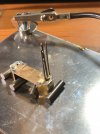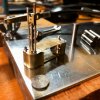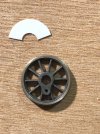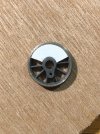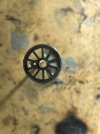Lyndhurstman
Western Thunderer
Linked In
Motion madness strikes again. This week, having cut some rods from solid sheet, and being less than happy with the results, I treated myself to some nickel silver strip from Eileen’s Emporium (very fast turnaround…) and, this afternoon, after battling with the paving slabs in the back garden, I’ve knocked up a couple of combination levers for the Y4 Walschaerts valve gear. Drilled 0.45 mm in three places, to take nickel silver pins. Dimensions taken from the GERS drawings. I made up a couple of union links earlier this week, too. Here’s the beginnings of the knitting having a test fitting.
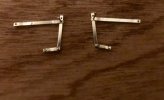
Cheers
Jan
Motion madness strikes again. This week, having cut some rods from solid sheet, and being less than happy with the results, I treated myself to some nickel silver strip from Eileen’s Emporium (very fast turnaround…) and, this afternoon, after battling with the paving slabs in the back garden, I’ve knocked up a couple of combination levers for the Y4 Walschaerts valve gear. Drilled 0.45 mm in three places, to take nickel silver pins. Dimensions taken from the GERS drawings. I made up a couple of union links earlier this week, too. Here’s the beginnings of the knitting having a test fitting.

Cheers
Jan

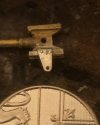
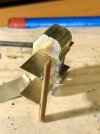
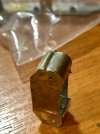
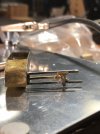
 The RSU is able to place a very high heat into a very small area, very quickly. Literally one second of full power is enough on the top of the packing gland is enough to make the solder paint flow underneath. And a careful dab even allows a slight movement of one of the slide bars if the point of the electrode is placed on the joint. Ask me how I know…
The RSU is able to place a very high heat into a very small area, very quickly. Literally one second of full power is enough on the top of the packing gland is enough to make the solder paint flow underneath. And a careful dab even allows a slight movement of one of the slide bars if the point of the electrode is placed on the joint. Ask me how I know…